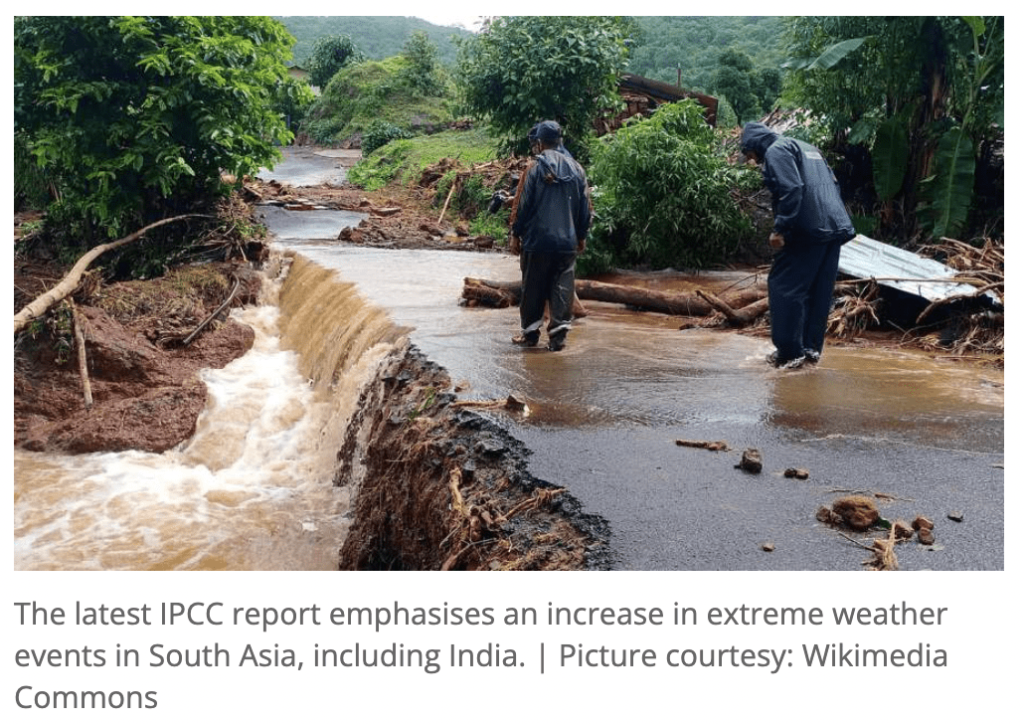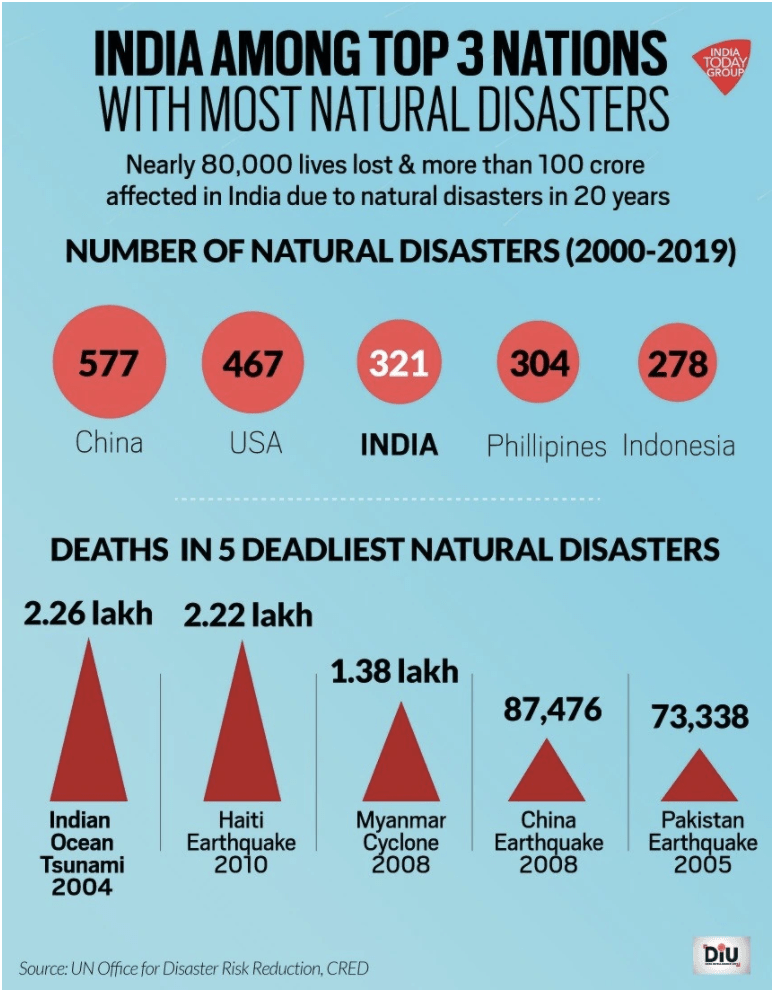The last four years in the Southern part of India have witnessed a series of diverse natural disasters ranging from the destructive flood in 2018 to the widespread of covid – 19 in 2020, and presently the issue of heavy rain and landslides. Many times we blame nature for the continuous occurrence of natural disasters, however have we ever wondered if any of our actions have contributed to this pattern of dreadful events that we are facing today?
Changing Climates in India
When studying about natural disasters in different parts of the world, one can understand that it has become an event that occurs often. Taking India as an example, since the last decade there has been an abnormal shift in the climate pattern across the country. Being a developing country many in India rely on farming for their livelihood, the process of farming is largely dependent on the seasonal weather. However, with the abnormal rain patterns and drought situations the farmers have been struggling to meet their ends.
In 2018, Kerala witnessed one of the worst floods recorded destroying lifetime assets of people and killing many, the geographers then forecasted that the occurrence of flood is expected to take place frequently from then. When analysing this situation of a state where rains never caused a problem one can understand the different layers within it.
Climate changes in the recent past have made India a less livable country. Government studies point out that if the greenhouse gas emissions are not controlled the climate changes will be extreme. This can result in a number of issues as the primary population of India relies on seasonal agriculture. The Covid – 19 pandemic and lockdown gave the government a huge opportunity to control the greenhouse gas emissions to a large extent. However, the pollution levels rose back once the lockdown was lifted. This means the country is expected to face the worst heat waves, droughts, floods and cloudbursts according to the government reports.
With industrialisation, in Kerala a number of factories have been set up nearby rivers and lakes, to meet the rising high demand of electricity dams have been built across the free flowing rivers, people converted their paddy fields where usually the rain water was stored into land for financial purposes. Can we blame nature for its actions now? Initially where the water was stored, and the rivers that run free have been restricted, where else would the large amount of water go?

Displacement of livelihood is a major concern with the continuous occurrence of natural disasters. Many regions of South India have witnessed a large group of people displaced from their hometown to elsewhere due the landslides and floods. In the year 2020 alone, India witnessed the worst locust attack in decades, three cyclones, a nationwide heatwave and flooding in different parts of the country that killed hundreds of people and forced people to migrate. The following climate change assessment conducted by India suggests that the situation is not expected to improve anytime soon but is expected to get worse over time. The temperatures were predicted to increase by 4.4 degree celsius.
In the northern part of the country, the Himalayas are expected to see an increase in the temperature making the summer time even more unbearable. The experts from Institute of Tropical Meteorology (IITM) Pune, highlighted that the temperatures in the mountain ranges increased by 1.3 degree Celsius between 1905 to 2014 and by the end of 21st century the temperatures are expected to increase by 5.2 degree celsius causing the glaciers to melt. This acceleration of glacier retreat will cause rising levels of water flow in the northern rivers. This will result in uncertain situations during the non – monsoon months, as people in the Himalayan regions experience water shortage already in spring dryups.
Seasonal monsoons have been drastically affected due to climate change. The temperature of the sea was reported to have risen by 1 degree celsius. This impacts the June – September monsoon climate in India. There is an increase in rainfall during this time making it difficult for the farmers. If not the adequate amount of rainfall is given the crops and vegetables will rot. Hence now farmers have to be cautious about the increase in rainfall and plant their crops accordingly. This rising level of rainfall is uneven and has decreased in the Western Ghats of India. This is mainly because of the air pollution.

Conclusion
Climate change and the continuous occurrence of natural disasters is not pleasant news for the development of a country. It is high time that people unite and work towards creating a sustainable pattern for life. By being inclusive and concerned about our planet is the very first step towards bringing a change. It is crucial to reevaluate our habits and how it affects our nature at an individual level as well as a national level. This helps the government and organizations to take further steps on improving the current situations.
Climate change indirectly impacts the livelihood of humans and not just the planet, people are forced out of their homes due to the disasters, many farmers have lost their source of income due to floods and droughts, and temperatures in India have increased making their country less livable. The greenhouse gas emissions are reported to be the highest levels in two million years. With emissions continuously rising, results in warmer temperatures compared to the past. This has resulted in several changes that influence changes in other areas of human development. The consequence ranges from severe floods, intense droughts, rising sea levels, and declining biodiversity. To handle these issues it is important for the government to take action. Though climate action may be costly for the government, climate inaction would be vastly expensive. It is high time that developed countries work towards being greener and support developing and underdeveloped countries to be more sustainable.




very informative articles or reviews at this time.